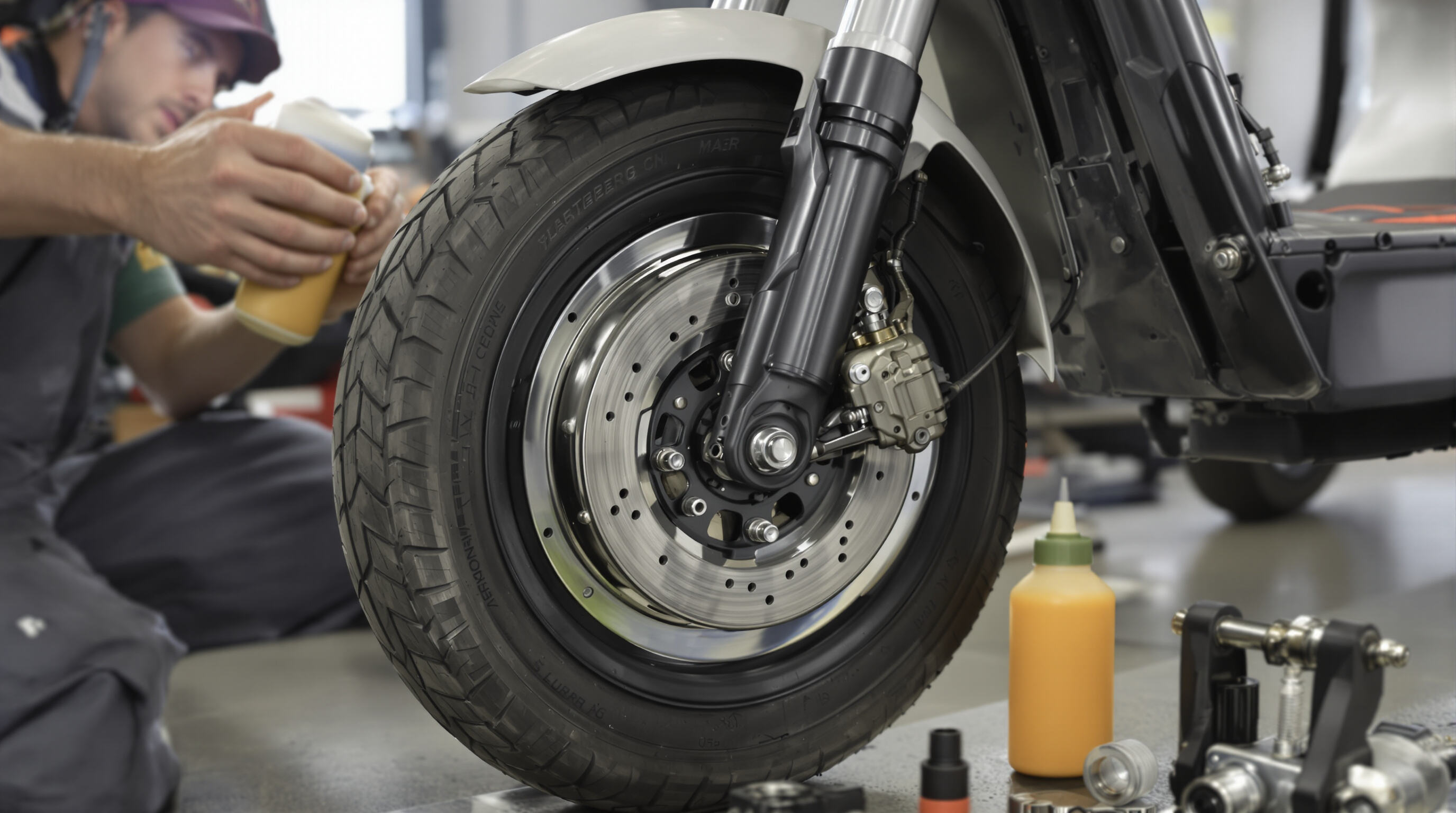
Most lithium ion batteries hold around 70 to 80 percent of their original capacity after about two years of regular daily riding, then fall off sharply to somewhere between 50 and 60 percent by the third year mark, based on what various micromobility companies have reported over time. This kind of performance drop tends to coincide right when those standard warranty periods for mid priced electric scooters run out, which naturally leads many owners toward replacing rather than repairing their devices. When battery power starts waning, people notice significantly reduced range capabilities, often cutting back anywhere from 40% to nearly half of what they used to get. Plus there's this annoying voltage fluctuation problem that gets worse in places where temperatures swing wildly from freezing cold to scorching heat.
Hub motors lose 12–18% efficiency within 1,500–2,000 miles due to bearing wear and internal degradation. Commuters averaging 100 miles per week often need motor servicing or replacement within 18–24 months post-warranty. Non-sealed units are especially vulnerable to water intrusion from wet roads, accelerating corrosion in models without IP65-rated protection.
Tires on those shared city paths get punctured about three times more often than what we see in suburban neighborhoods according to some recent infrastructure reports from 2023. And it's not just flats that are the problem. City riders face all sorts of extra wear issues too. The rims tend to warp when they hit those nasty potholes, spokes in older wheel designs start to fatigue after repeated stress, and bearings get contaminated with all the dirt and grime kicked up from busy roads. These problems happen all the time for anyone doing serious mileage in urban environments where roads aren't always maintained properly.
In hilly areas, disc brake assemblies require full overhaul every 8–12 months, with aggressive riders replacing pads quarterly. Controller failures increase by 22% after 18 months due to capacitor aging, leading to throttle response delays, inconsistent regenerative braking, and error codes that require professional diagnostics.

Electric scooter components follow predictable wear patterns under urban use. Brushless motors last 3–5 years (3,000–5,000 miles) before efficiency drops 15–20%, while aluminum alloy frames show 70% fewer stress fractures than lower-grade materials over five years. Key failure timelines include:
| Component | Average Lifespan | Failure Signs |
|---|---|---|
| Lithium Batteries | 2–4 years | 30% capacity loss |
| Brake Pads | 6–18 months | Metal-on-metal sounds |
| Pneumatic Tires | 8–14 months | Frequent air loss (>3x monthly) |
| Motor Controllers | 3–5 years | Error codes, throttle lag |
Proactive maintenance reduces replacement costs by 32%, per micromobility service data. Essential routines include:
| Maintenance Tier | Time Investment | Critical Actions |
|---|---|---|
| Basic | 10 mins/week | Visual inspections, tire care |
| Intermediate | 45 mins/month | Bolt tightening, lubrication |
| Advanced | 2 hrs/quarter | Battery diagnostics, load testing |
The latest data from the Micromobility Engineering Journal shows that components on scooters made after 2020 degrade about 18% quicker compared to those built before 2018. Manufacturers blame this on increasing material prices, but folks working at repair shops tell a different story. They've noticed around 43% of breakdowns happen because these newer models just aren't designed to be fixed easily. And now we're seeing real worries about whether companies are intentionally making products last shorter. Look at the numbers: over half (that's 62%) of riders end up replacing whole units instead of fixing specific broken parts when something goes wrong.
When riders slam on the gas or hit the brakes hard, this accounts for nearly 4 out of every 10 early motor failures after warranty expires on scooters. Going over the suggested weight capacity by just 20% can really take a toll on wheels, causing bearings to wear down almost three times faster than normal. What surface people ride on makes a big difference too. Those stuck navigating cracked streets and potholes end up swapping out tires roughly 40% more frequently compared to folks who stick to well-maintained cycling lanes. These factors all point to how everyday riding habits impact long term scooter maintenance needs.
The high humidity found along coastlines really speeds up corrosion problems in brake connectors, making them wear out about 65% faster than what we see in dry regions. When talking about lithium ion batteries, things get even worse in places where temperatures regularly climb above 35 degrees Celsius. These batteries tend to lose between 15 and 20 percent of their capacity every year, which is actually twice as fast as they degrade in more moderate climates. Road conditions matter too for vehicle lifespan. Take a look at cities where more than 30% of streets remain unpaved or covered in cobblestones, and there's typically around 50% more frequent need for suspension work each year. And let's not forget about winter driving either. Vehicles exposed to road salt need much closer attention, with controllers requiring inspection every three months to catch those pesky moisture related electrical issues before they become major problems.
The cost of owning electric scooters after the warranty expires is expected to climb quite a bit over the next few years. Industry experts predict these expenses will rise at around 8.35% each year until 2030 mainly because people need to replace batteries more often and fix motors that start failing. Looking ahead to 2025, research indicates nearly half (about 43%) of what owners spend after buying comes from replacing those critical safety parts like brake systems and tires. We're seeing this happen across many cities where scooter companies have been operating for several years now. As these vehicles get older past their typical 3 or 4 year warranty period, the market for replacement parts just keeps growing stronger.
The repair service market is currently dominated by North America and Europe because of their tough safety regulations. However, things are changing fast in the Asia-Pacific area which should surpass these regions by around 2028 growing at about 14% per year. Take places such as Jakarta and Mumbai for instance they deal with some serious issues. The heavy monsoons there really speed up rust problems on vehicles, and the terrible condition of roads means suspensions get worn out much quicker than normal. Market research suggests something interesting too roughly 62 percent of riders in Southeast Asia end up replacing their tires every six months or so compared to Europeans who typically do it once a year. This pattern creates a whole different kind of demand for replacement parts specifically made for electric scooters in those markets.
Electric scooter batteries degrade due to frequent charging cycles, exposure to extreme temperatures, and normal wear over time. This typically results in a capacity drop of 70 to 80 percent within two years of regular use.
Regular maintenance such as cleaning, avoiding excessive moisture, and adhering to recommended weight limits can help prolong the motor's efficiency and lifespan.
Signs of brake and controller failure include squealing noises, spongy brake response, inconsistent throttle response, and the presence of error codes.
There is a debate that newer scooter models degrade faster than older ones due to design choices, which some believe may not prioritize easy repairability and longer lifespan.
 Hot News
Hot News
© Copyright 2024 Shenzhen New Image technology Co., Ltd All Rights Reserved Privacy policy